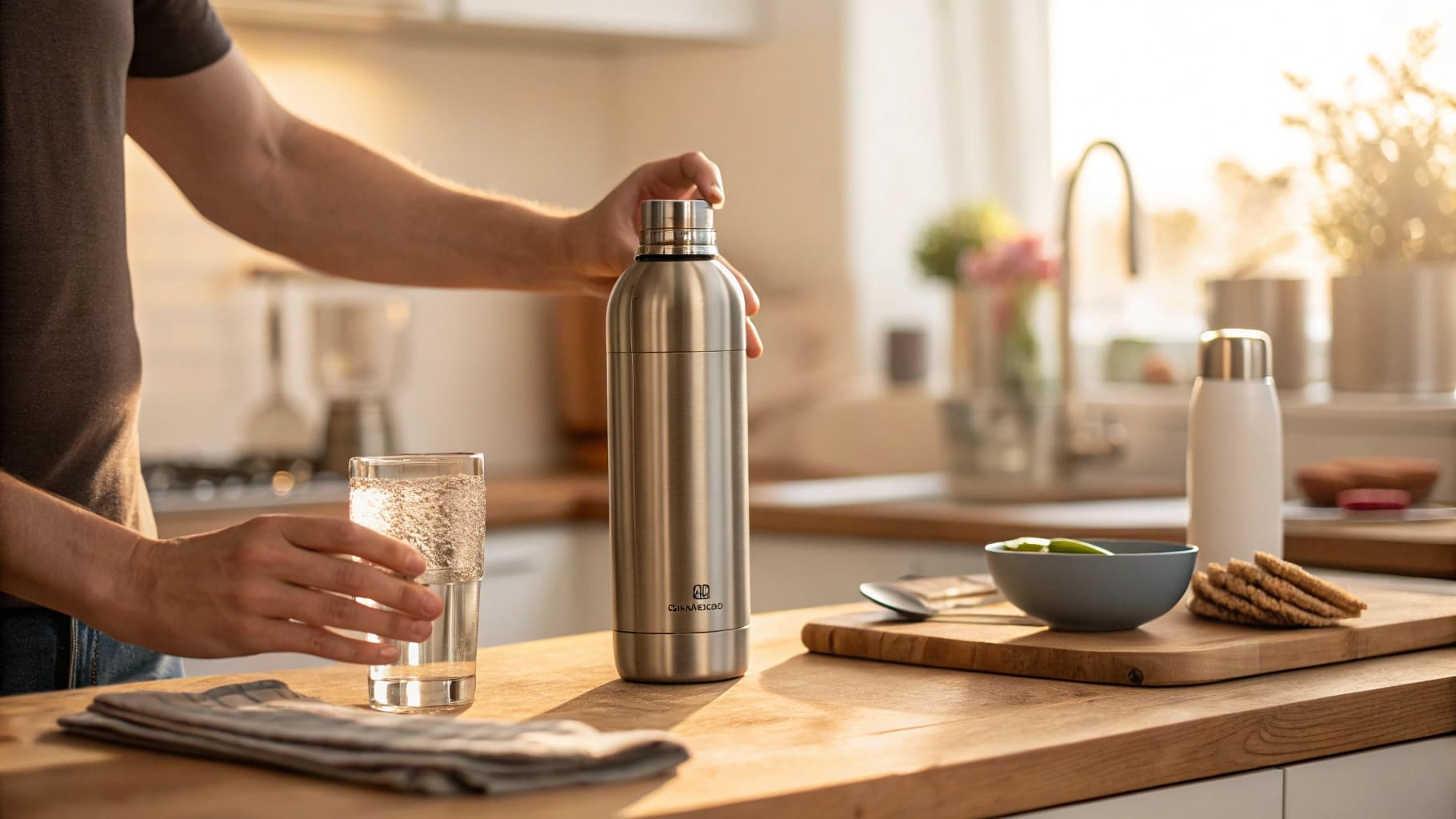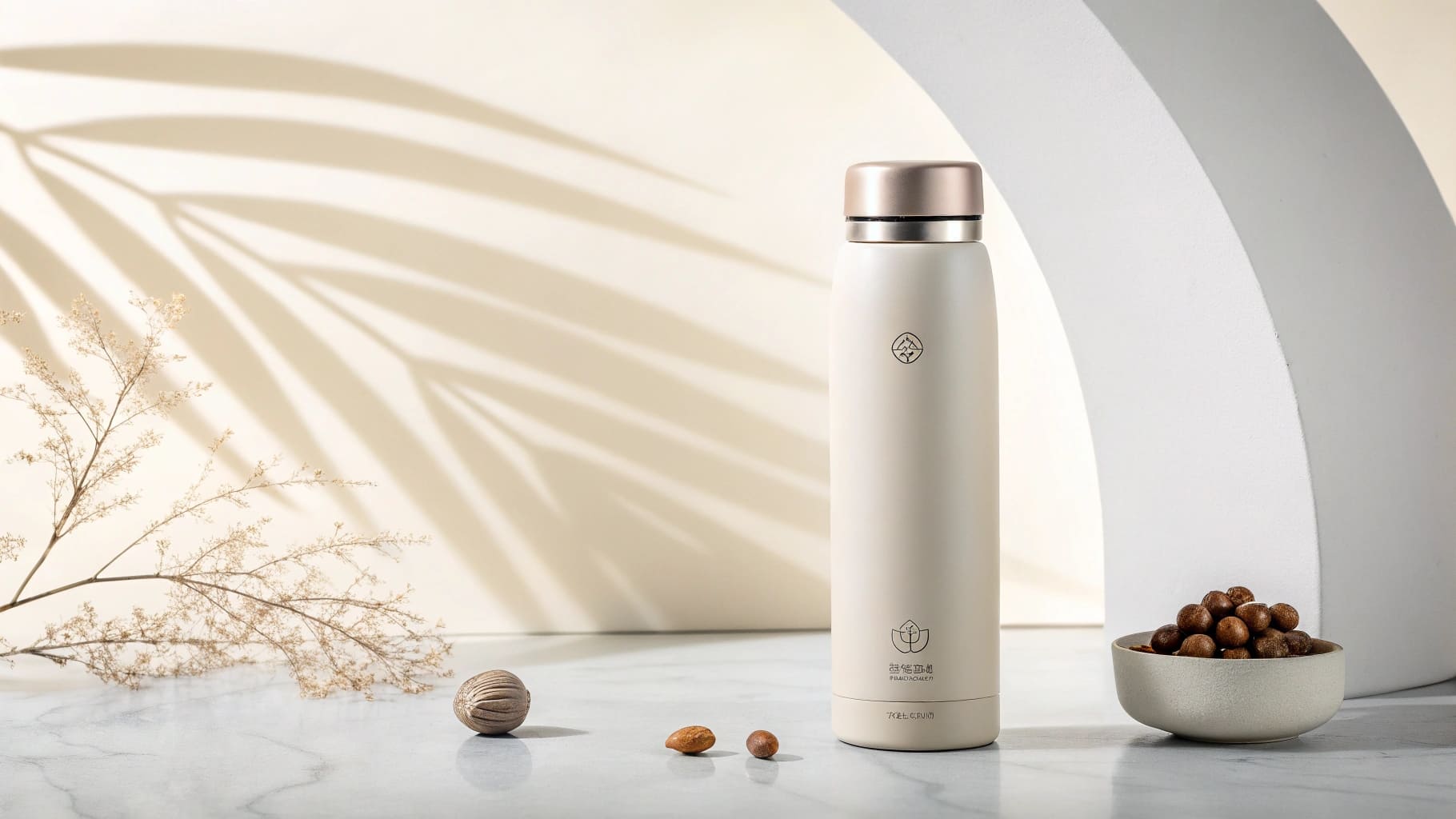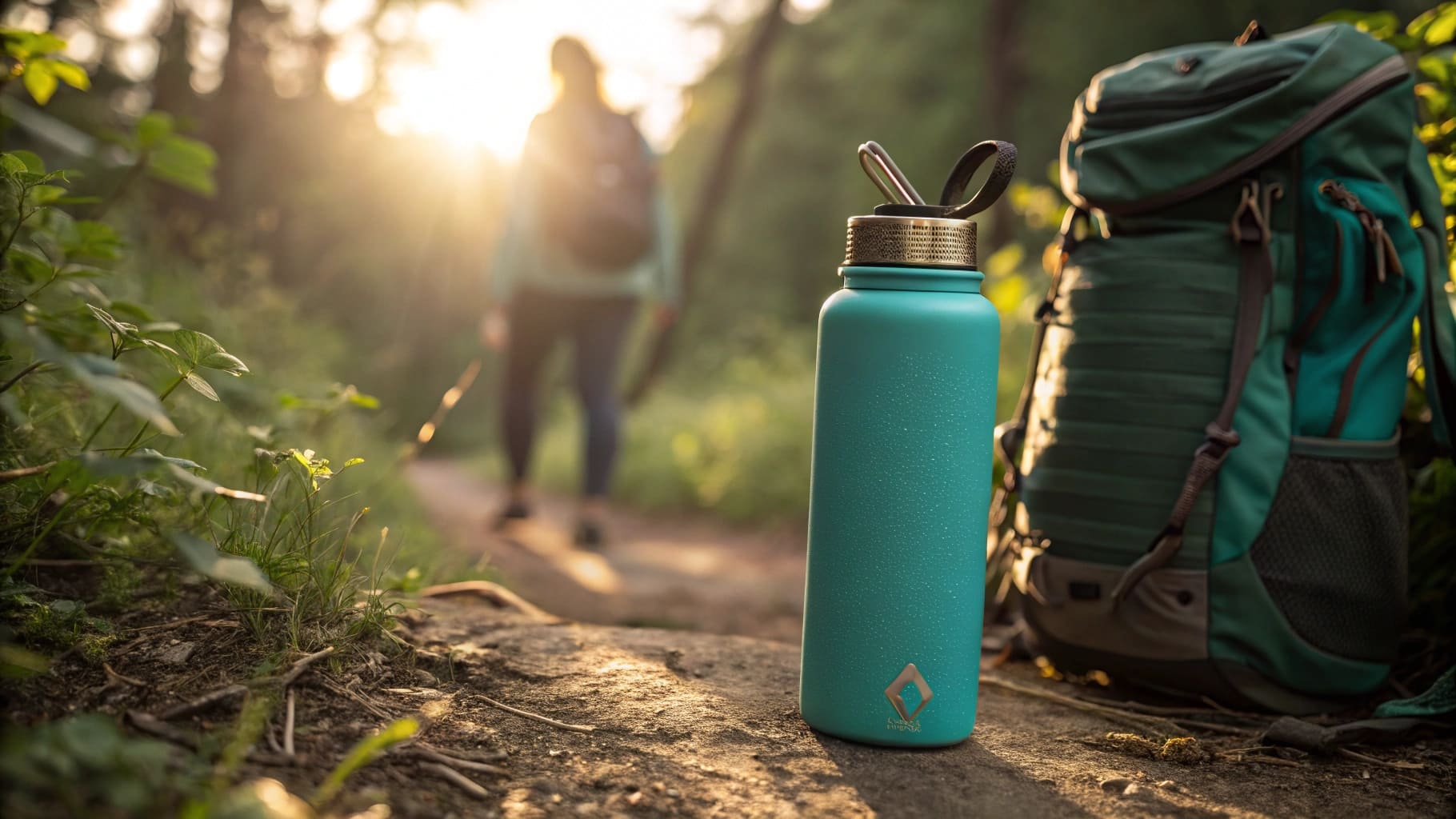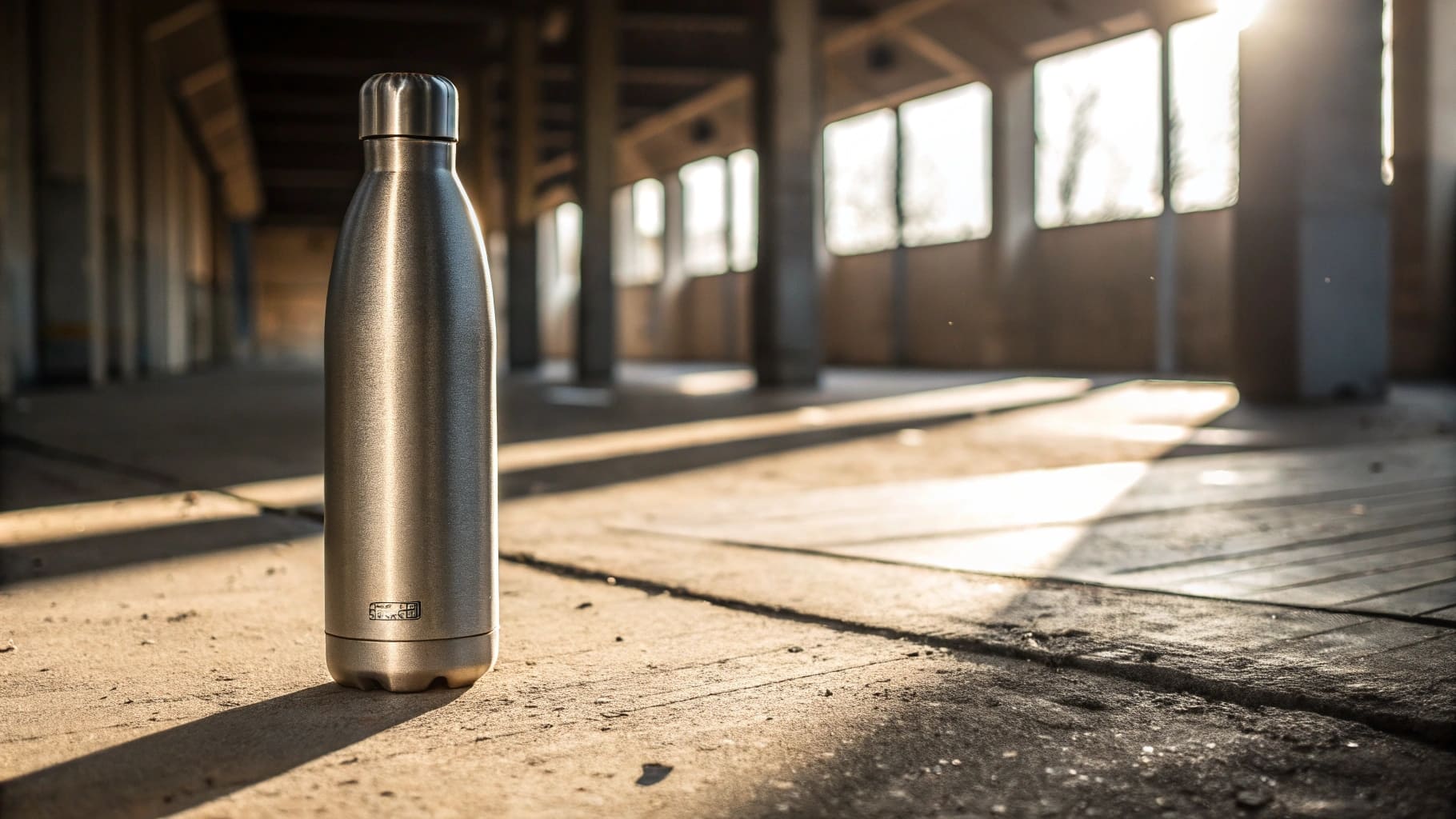Tired of your water tasting strange or metallic? It's a common issue with many bottles. You deserve to enjoy the pure, clean taste of your beverage every time.
The science behind a pure taste experience from high-quality stainless steel bottles, like those from Purist, hinges on two critical factors. These are the quality of the stainless steel itself and the finish of the bottle's interior surface. These elements work together to prevent any unwanted flavors.

Many people wonder about how their water bottle affects taste. It's a valid concern that touches on material science and manufacturing precision. We are going to look into this. We will explore what makes some bottles better at delivering that "pure taste." This is important for anyone who values clean-tasting hydration, and especially for businesses. For businesses like mine, Icobottle, understanding this helps us provide top-quality products to our clients.
What is the science behind edible water bottles?
Are you worried about plastic pollution from single-use bottles? It's a big problem for our planet. Edible water bottles offer a unique, though niche, alternative to traditional containers.
Edible water bottles are typically made from natural, biodegradable polymers, often derived from seaweed. The basic idea is to encapsulate water in a gel-like membrane that you can eat or that will quickly decompose.

The concept of edible water bottles, like the "Ooho" product, is quite fascinating. It draws on a culinary technique called spherification.
How Edible Bottles Are Made
- Core Material: The primary ingredients are usually sodium alginate (a natural polymer extracted from brown seaweed) and calcium chloride or calcium lactate.
- The Process: A sphere of liquid, like water, is dipped into a solution containing these compounds. A gel-like membrane forms around the water. This creates a small, edible, and biodegradable pouch.
Advantages
- Biodegradability: If not consumed, these "bottles" break down naturally and quickly. This is much faster than plastic, which can take hundreds of years.
- Reduced Waste: They aim to reduce packaging waste, especially at events like marathons or festivals where many single-use plastic bottles are consumed.
Challenges and Limitations
While innovative, edible water bottles face several practical challenges for everyday use:
- Durability: The membrane is fragile. It can burst easily, making it hard to transport or store. You can't just toss it in a bag.
- Hygiene: The outer surface is handled directly and then consumed. This raises concerns about cleanliness, especially if it's been touched by multiple people or surfaces.
- Taste and Texture: The membrane itself can have a slight taste or texture that not everyone finds pleasant. Also, you can't really flavor the water inside without affecting the membrane process.
- Scalability and Shelf Life: They are not suitable for mass distribution like traditional bottled water due to their short shelf life and delicate nature. They are usually made on-site or for immediate consumption.
- Volume: They typically hold only a small mouthful of water.
For businesses like mine, Icobottle, which focuses on durable, reusable products like stainless steel hip flasks and water bottles, edible bottles represent an interesting eco-innovation for specific contexts. However, for reliable, daily hydration with a guarantee of pure taste and reusability, stainless steel remains the far more practical and robust solution. My clients, procurement officers from large companies or startup bosses, need products that last and consistently deliver quality. That’s where stainless steel shines.
Why does water taste different in stainless steel?
Have you noticed that water from a stainless steel bottle often tastes cleaner? Many plastic or aluminum bottles can leave an odd aftertaste. Stainless steel offers a refreshingly different and more neutral experience.
Water generally tastes different, or rather, purer, in stainless steel because the metal is highly non-reactive. This means it doesn't leach chemicals or impart unwanted flavors into your drink, unlike some other materials.

The primary reason stainless steel is favored for food and beverage containers is its chemical inertness. This is especially true for high-quality grades like 304 (often called 18/8) and 316 stainless steel.
What "Inert" Means
Being "inert" means that the material doesn't readily react with the substances it comes into contact with.
- No Leaching: Stainless steel does not leach chemicals into water or beverages. This is a major advantage over some plastics, which can release compounds like BPA or phthalates, especially when exposed to heat or if the plastic is old or scratched. These leached chemicals can affect both taste and health.
- No Corrosion: High-grade stainless steel has excellent corrosion resistance. This prevents metallic ions from dissolving into the drink, which could otherwise impart a metallic taste. The chromium in stainless steel forms a passive, protective oxide layer on the surface, which self-repairs if scratched.
- No Odor Retention: Stainless steel surfaces are non-porous. They do not absorb flavors or odors from previous drinks. You can switch from coffee to water, and after a simple wash, there's no lingering coffee taste. Plastics, on the other hand, are notorious for retaining smells.
Comparison with Other Materials
Let's consider how stainless steel compares to other common bottle materials regarding taste:
- Plastic: Can leach chemicals, absorb odors, and often imparts a "plasticky" taste.
- Aluminum: Raw aluminum is reactive. So, aluminum bottles are almost always lined with a plastic or epoxy resin coating. If this lining is compromised (scratched, degraded), the aluminum can react with the beverage, affecting taste. The lining itself can also be a source of taste issues.
- Glass: Glass is also very inert and excellent for taste purity. However, its main drawback is fragility. It's heavy and can break easily.
As a B2B supplier of stainless steel products, I emphasize these points to my clients. When Mark Shenng from Canada sources stainless steel water bottles from my company, Icobottle, he's looking for this reliable neutrality. His customers want a product that keeps their water tasting like water, pure and simple. This inherent property of good quality stainless steel is a key selling point. It's not just about looks; it's about the integrity of what you're drinking.
| Feature | Stainless Steel (304/316) | Plastic (e.g., PET, Polycarbonate) | Aluminum (Lined) | Glass |
|---|---|---|---|---|
| Reactivity | Very Low | Can be Reactive (Leaching) | Low (Liner is key) | Extremely Low |
| Taste Impact | Minimal/None | Often Imparts Taste/Odor | Possible if liner fails | None |
| Odor Retention | Very Low | High | Medium | Very Low |
| Durability | High | Medium | Medium | Low (Fragile) |
This table clearly shows why stainless steel stands out for maintaining the natural taste of beverages.
Do stainless steel bottles really have no taste?
Are you someone with a sensitive palate, sometimes still detecting a faint metallic note even from a stainless steel bottle? You want that absolutely pure, untainted water experience. The answer largely depends on the bottle's quality.
Generally, high-quality stainless steel bottles do not impart any taste. However, if a very subtle metallic taste is detected, it could be due to lower-grade steel, the manufacturing process, or an insufficiently smooth interior surface finish.

As I've learned in my years manufacturing and exporting stainless steel drinkware at Icobottle, achieving a truly "pure taste" experience isn't just about using stainless steel. It's about using the right stainless steel and, critically, treating its surface correctly. This is the core science that premium brands like Purist focus on, and it's what discerning B2B buyers like Mark Shenng look for.
1. The Importance of Steel Grade
Not all stainless steel is created equal.
- Food-Grade Steel: We primarily use Type 304 stainless steel, also known as 18/8 stainless steel (referring to its composition of 18% chromium and 8% nickel). This grade is widely used for food and beverage applications due to its excellent corrosion resistance and durability. It's chosen because it is largely inert.
- Higher Grades (e.g., 316): For even greater corrosion resistance, especially against salts and acidic substances, Type 316 stainless steel (marine grade) can be used. It contains molybdenum, which enhances its resistance to pitting and crevice corrosion. While often more expensive, it offers an added layer of assurance.
- Avoiding Low-Quality Steel: If a manufacturer uses cheaper, lower-grade stainless steel, it might contain more impurities or have a less stable passive layer. This could potentially lead to a slight metallic taste, especially with very acidic or alkaline beverages, or if the surface isn't perfectly finished. For my clients in America and Europe, ensuring certified food-grade steel is non-negotiable.
2. The Crucial Role of Interior Surface Finish
This is where the "magic" truly happens for taste purity. Even high-quality steel can sometimes allow for microscopic interactions if the surface isn't optimized.
- Standard Finish: A standard polished interior is good, but microscopic peaks and valleys can still exist. These tiny crevices can trap beverage particles or allow for minimal ion exchange.
- Electro-polishing: This is an electrochemical process that removes a very thin layer of material from the stainless steel surface. It smooths out these microscopic peaks and valleys, creating an ultra-smooth, mirror-like finish.
- Benefits of Electro-polishing:
- Reduced Surface Area: A smoother surface has less actual contact area with the liquid.
- Enhanced Passive Layer: It can improve the chromium-to-iron ratio at the surface, strengthening the protective passive layer.
- Easier Cleaning: The ultra-smooth surface is much easier to clean thoroughly. Bacteria and old beverage residues have nowhere to hide. This prevents flavor carry-over from previous drinks.
- Minimized Metallic Taste: By creating a more stable and less reactive surface, the chance of any metallic ions transferring to the water is virtually eliminated.
- Benefits of Electro-polishing:
- Special Interior Coatings: Some premium bottles, like Purist, go a step further. They apply an extremely thin, inert, glass-like (often silica-based) coating to the interior. This creates a barrier that is as non-reactive as glass but within a durable stainless steel body. This ensures that the beverage only touches this perfectly inert layer.
When procurement officers like Mark Shenng discuss specifications, these details about interior finish are paramount. He knows that his Canadian customers are discerning. They might not understand the exact science, but they can taste the difference. He faces pain points like inefficient communication or delayed shipments, but product quality, including taste purity ensured by these processes, is fundamental. He understands sales but relies on suppliers like me for the technical expertise to deliver on that quality promise. The "science" here directly translates to customer satisfaction and brand reputation.
Conclusion
Ultimately, the pure taste from premium stainless steel bottles comes from high-grade, inert steel and an advanced, ultra-smooth interior finish. This combination truly minimizes any taste alteration.

